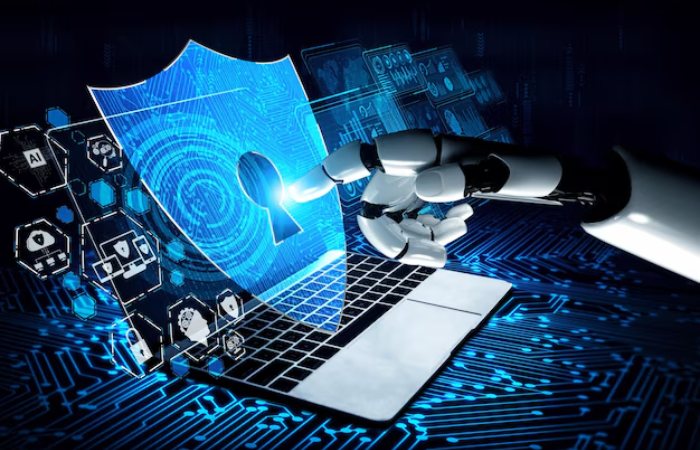In an increasingly interconnected world, critical infrastructure such as power grids, transportation networks, and communication systems face increased risk from cyber threats. Protecting this infrastructure is paramount, as any disruption can have far-reaching consequences on a country’s economy, security, and overall well-being.
To combat the growing cleverness of cyber attacks, the mixture of artificial intelligence (AI) and cybersecurity is proving to be a powerful tool in protecting critical infrastructure. This article examines how AI is being applied to protect vital systems, including the role of RTK base stations and Attack Surface Intelligence in improving cybersecurity defences.
Critical Infrastructure and Its Vulnerabilities
Critical infrastructure refers to the essential services and facilities that support a country’s societal functions, including energy, water, transportation, and healthcare. These systems increasingly rely on digital technologies and networked communications, making them vulnerable to cyber threats.
Cyberattacks on critical infrastructure can range from data breaches and ransomware attacks to more serious incidents such as power grid outages or disruption of transportation systems. For example, the 2021 Colonial Pipeline attack demonstrated how a single ransomware attack can disrupt fuel supplies across an entire region. The growing attack surface requires advanced solutions that go beyond traditional cybersecurity measures.
How AI Helps Cybersecurity Protect Critical Infrastructure

AI alters the cybersecurity landscape by providing real-time threat detection, automated response, and predictive insights into potential vulnerabilities. Integrating AI into critical infrastructure cybersecurity systems offers several key benefits:
Real-time threat detection and response
Traditional cybersecurity methods rely heavily on human operators to monitor networks, detect anomalies, and respond to incidents. However, human intervention alone is insufficient as cyber threats become more sophisticated and numerous. AI-powered systems can analyze massive quantities of data in real time, identifying potential threats faster than anyone else.
Using machine learning algorithms, AI systems can learn from past cyberattacks, improve their detection capabilities, and reduce false positives. For example, an AI system can recognise patterns that signal the onset of a distributed denial of service (DDoS) attack and immediately take steps to mitigate it, preventing damage to critical infrastructure.
Predictive Maintenance and Threat Prevention
AI-powered systems can analyze network data to predict potential cyber threats before they occur. By analyzing patterns in system behaviour, AI can identify vulnerabilities and possible attack vectors, allowing organizations to address weaknesses before they are exploited. This predictive capability is significant for critical infrastructure, where preventative security measures can prevent catastrophic failures.
In addition, AI-powered predictive maintenance can help prevent physical failures in critical infrastructure. For example, an AI system can monitor the health of an RTK base station used in navigation systems and predict when maintenance will be required, preventing failures that could disrupt critical services such as autonomous vehicle navigation or precision farming.
Automate incident response
Once a cyberattack is detected, rapid response is critical to minimizing damage. AI can automate incident response activities such as isolating compromised systems, installing security patches, or blocking malicious IP addresses. This automation reduces response times and ensures that attacks are contained before they can cause widespread damage.
In addition, AI can integrate with Attack Surface Intelligence tools to provide a complete picture of all potential entry points for cyber threats. By continuously monitoring the entire attack surface, AI-powered systems can respond to even the most minor threats, ensuring that critical infrastructure remains protected.
AI-Based Tools for Protecting Critical Infrastructure

Several AI-based cybersecurity tools and techniques are being deployed to protect critical infrastructure. Here are some of the most important ones:
RTK Base Stations and Their Protection
RTK (Real-Time Kinematic) base stations provide accurate location data for various critical infrastructure systems, including autonomous vehicles, agriculture, and construction. These stations rely on accurate satellite signals to deliver real-time location data; any disruption can have serious consequences.
Cyberattacks on RTK base stations can cause widespread disruptions, affecting transportation networks and emergency response systems. AI is used to monitor and protect these stations from cyber threats. Machine learning algorithms analyze network traffic and signal patterns to detect irregularities that may indicate an attack. AI systems can also automatically switch to backup stations or alternate data sources when an attack is detected, ensuring continuous operations.
Attack Surface Intelligence for Critical Infrastructure
Attack surface intelligence (ASI) refers to identifying, analyzing, and monitoring all possible entry points through which a cyber threat can access a system. For critical infrastructure, the attack surface includes everything from network devices and sensors to control systems and communications networks.
AI improves attack surface intelligence by continuously mapping and monitoring the attack surface in real time. By using AI to assess vulnerabilities, organizations can gain an all-inclusive view of their systems and understand which areas are most at risk. AI-powered ASI tools can also model potential attack scenarios, allowing infrastructure operators to prepare for cyber threats and develop robust defence strategies.
Machine Learning for Adaptive Cyber Defense
Cyber threats constantly evolve, and attackers often change tactics to evade traditional security measures. Machine knowledge, a form of artificial intelligence, allows cybersecurity systems to adapt to these changes by learning from past incidents.
For example, AI systems can analyze data from previous attacks on critical infrastructure and develop new defences based on those findings. This adaptive approach ensures that cybersecurity defences remain effective even when cybercriminals change their tactics. Machine learning algorithms can also recognise new malware or phishing attacks even if they have never seen them before, improving overall threat detection.
Improved Network Security with AI
AI is also revolutionizing critical infrastructure network security by improving the detection unusual behavior within networks. AI-powered tools can monitor traffic patterns and detect deviations indicating a security breach, such as unusual login times, data transfers, or access to restricted systems.
Additionally, AI can help protect the network perimeter by detecting and blocking suspicious IP addresses or malicious traffic in real-time. This AI-enhanced perimeter protection is especially valuable in critical infrastructure, where unauthorized access can have devastating consequences.
Challenges of Implementing AI to Protect Critical Infrastructure

While there are considerable benefits to using AI in cybersecurity, there are also several challenges to consider:
Data Privacy and Ethical Concerns
AI systems need large quantities of data to function effectively. However, collecting and analyzing this data raises privacy concerns, especially in businesses such as healthcare and finance. Ensuring that AI-powered cybersecurity tools comply with data protection regulations while providing effective security solutions is a delicate balancing act.
Adversarial Attacks on AI Systems
AI systems themselves can become targets for cyberattacks. Adversarial attacks involve manipulating AI algorithms to produce inaccurate results, such as classifying a malicious file as harmless. Protecting AI systems from these attacks is a growing concern in the cybersecurity community.
Integrating with Legacy Systems
Many critical infrastructure systems rely on legacy technologies that may not be compatible with modern AI-based cybersecurity solutions. Integrating AI into these legacy systems requires careful planning and investment and ensuring that new technology does not disrupt existing operations.
Conclusion
The convergence of AI and cybersecurity rapidly changes how we protect critical infrastructure. AI offers unprecedented real-time threat detection, predictive maintenance, automated response, and attack surface monitoring capabilities. By incorporating AI into cybersecurity strategies, critical infrastructure operators can better protect their systems from increasingly sophisticated cyber threats.
As technologies like RTK base stations and Attack Surface Intelligence become integral to critical infrastructure, protecting them becomes even more important. AI-powered solutions provide the tools needed to monitor, protect, and adapt to the ever-changing cyber threat landscape, ensuring the continued security and resilience of the systems society depends on.
The role of AI in protecting critical infrastructure will only increase in the coming years, making it a cornerstone of modern cybersecurity strategies. Using these advanced technologies today will help ensure a safer and more secure future for everyone.

